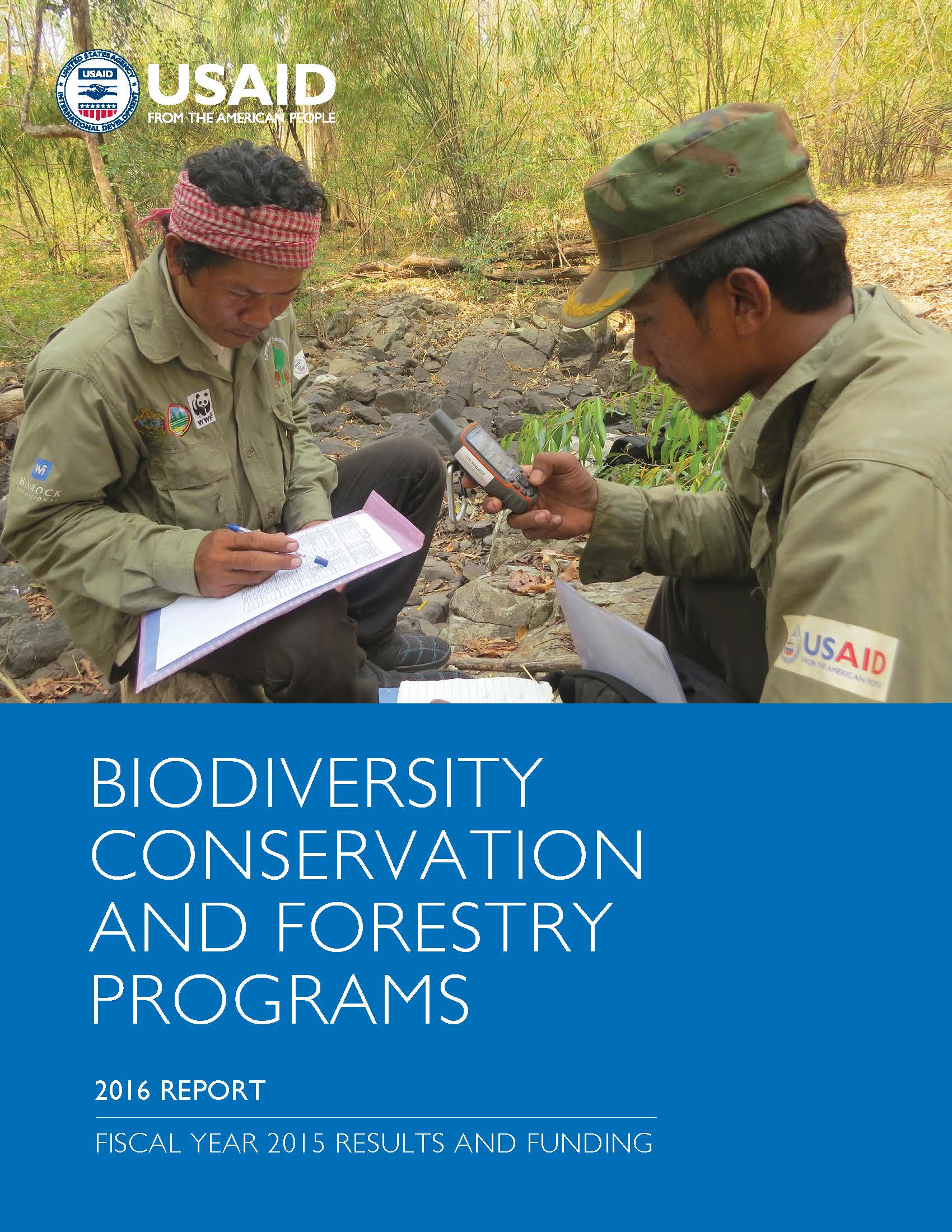- What We Do
- Agriculture and Food Security
- Democracy, Human Rights and Governance
- Economic Growth and Trade
- Education
- Ending Extreme Poverty
- Environment and Global Climate Change
- Global Climate Change
- Conserving Biodiversity and Forests
- Sustainable Urbanization for Global Progress and Security
- Securing Land Tenure and Property Rights for Stability and Prosperity
- Sustainable Land Management
- Environmental Impact Assessment
- Knowledge Management for Environment and Natural Resources
- Sustainable Tourism
- Earth Day
- Gender Equality and Women's Empowerment
- Global Health
- Water and Sanitation
- Working in Crises and Conflict
- U.S. Global Development Lab
USAID achieves multiple conservation and development objectives through programs that protect biodiversity in forests and other ecosystems, maintain or increase carbon stocks in forests, and restore forests lost or damaged by poor management or land conversion. An annual report for Congress and the broader public summarizes Agency biodiversity and forestry results from the prior year and funding plans during the publication year.
USAID’s Biodiversity Conservation and Forestry Programs, 2016 Report
FY 2015 Results and Funding (2.5MB PDF)
Published August 2016
SUMMARY: In fiscal year 2015, the Agency invested $250 million toward biodiversity conservation in about 50 countries, with approximately 57 percent of funds going to the 12 highest priority countries and regions identified in USAID’s Biodiversity Policy. About a quarter of FY 2015 funds were programmed to address wildlife crime in 25 countries, primarily to build capacity of law enforcement to deter, detect and disrupt poaching and wildlife trafficking, but also to reduce demand for wildlife products and foster international collaboration. USAID forestry programming, which advances multiple objectives but primarily climate change mitigation and biodiversity conservation, totaled $140 million in about 40 countries, almost entirely focused on tropical forests.
A selection of notable results and three in-depth project profiles serve to illustrate major approaches used by USAID and its partners. Agency programs had a substantial impact and reach in FY 2015, improving natural resource management across 75 million hectares of biologically significant area. Our programs built the capacity of 100,000 people to better manage, conserve and/or live without overexploiting biodiversity, and helped at least 800,000 people receive a tangible economic benefit from conservation enterprises or sustainable use.
Previous Reports:
USAID’s Biodiversity Conservation and Forestry Programs, 2013 Report (2.9MB PDF)
USAID's Biodiversity Conservation and Forestry Programs, 2011 Report (321KB PDF)
USAID's Biodiversity Conservation and Forestry Programs, 2009 Report (6MB PDF)
USAID’s Biodiversity Conservation and Forestry Programs, FY 2005 (4.2MB PDF)
Tropical Forests: USAID’s Programs in 2004 (3.6MB PDF)
Tropical Forests: USAID’s Programs in 2003 (2.3MB PDF)
Tropical Forests: USAID’s Programs in 2002 (1.1MB PDF)








Comment
Make a general inquiry or suggest an improvement.